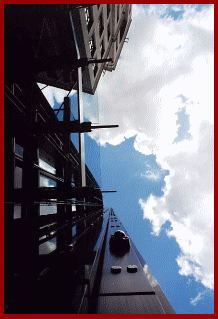| ||||||||||||||||||||||||||||||
Welcome to the | ||||||||||||||||||||||||||||||
 | ||||||||||||||||||||||||||||||
 | ||||||||||||||||||||||||||||||
So you want to know more about Digital, | ||||||||||||||||||||||||||||||
The same principles of digital signal processing applies to a whole range of electrical engineering systems. What sounds cumbersome and complex to a human, is simplicity itself for a high speed electronic brain, or what we prefer to call a computer. In the world of Closed Circuit Television, there are currently three specific levels of digital technology being used:- Firstly, you will often see cameras marked as having 'DSP' or to give it its full title, Digital Signal Processing. Now the first thing to say about a 'DSP' camera, is that despite any suggestions to the contrary, it is in fact an analogue camera, so not digital at all. How can this be...? Well, the signal coming from the camera is a normal analogue composite output (usually unbalanced) which is fed to another piece of equipment such as a monitor, via a standard BNC connector socket. The DSP function relates to how the camera internally controls its exposure and colour reproduction settings, to achieve an optimum output under any given conditions. A reasonable comparison might be if you imagine that on a modern vehicle, the engine management system is often a complex microcomputer which controls the fuel and mixture settings to optimise engine performance. Whilst the vehicle may have computer control circuits buried deep within, this wouldn't actually make it a digital machine. In practice, the Digital Signal Processing circuitry is programmed with a wide range of variables and adjustments, so in a somewhat simplistic way, it could be said that when the camera recognises a particular set of circumstances (such as colour temperature and level of lighting), it will already know how to set up the internal circuitry to achieve the best possible image. In the 1950's television cameras required the services of a skilled engineer to constantly adjust the settings to get the best possible picture; now it's all down to perhaps a single embedded chip, to provide the "Digital Signal Processing" needed to achieve this automatically. | ||||||||||||||||||||||||||||||
 | ||||||||||||||||||||||||||||||
IMPORTANT: No material may be reproduced, copied or redistributed from this site, © doktorjon.co.uk 2004 - 2008 Homepage...:...Gateway...:...Technical Gateway....:....Quickfind Index....:....Equipment Directory | ||||||||||||||||||||||||||||||

